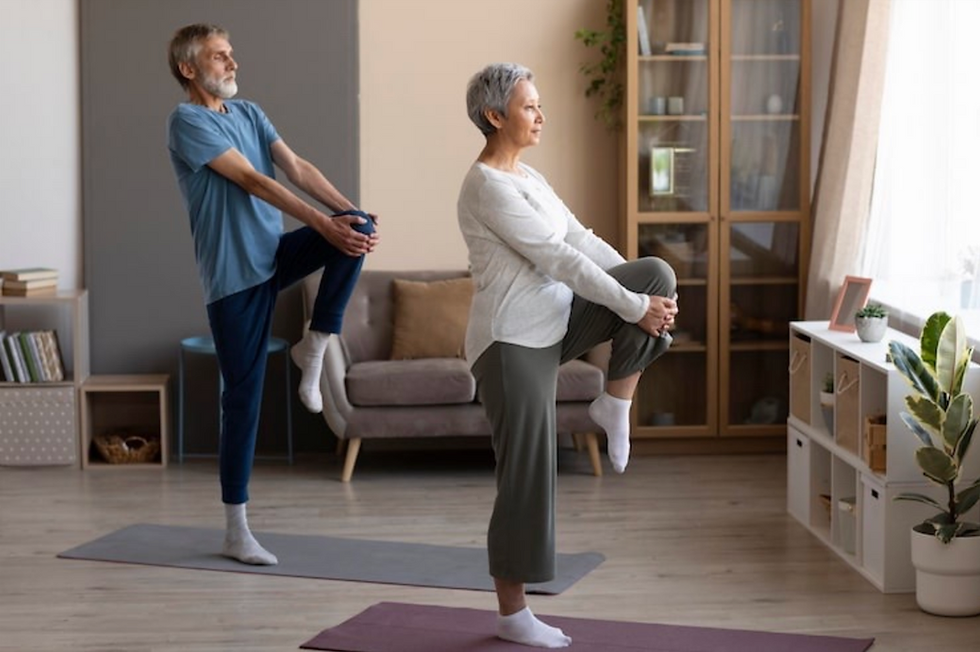Pilates Fitness Friday: Balance Training as Fall Prevention
- Michael King

- Oct 10
- 2 min read

Falls are not a normal part of ageing. They are often the result of neglecting balance and proprioception. Pilates teachers can help prevent falls by building awareness, stability, and confidence in movement.
1. Start with Assessment: Observation tells you more than numbers. Watch how your client transitions between positions.
Notice sway when standing still.
Look at how they react when balance is challenged.
Use simple single-leg stands to gauge control and endurance.
Record how long they hold, but note quality, not just duration.
Clients who grip the floor with their toes or hold their breath are compensating, not balancing.
2. Build from the Ground Up: Balance starts with the feet. Strengthen intrinsic foot muscles and ankle stability first.
Toe spreads and heel raises.
Weight transfer work on the Reformer or wobble board.
Eyes closed standing to test proprioception.
A strong base lets the pelvis and spine adjust smoothly during shifts of weight.
3. Integrate Core and Breath: Core stability supports balance. Breathing controls the nervous system’s response to challenge.
Teach gentle exhalation during shifts.
Cue the client to find their centre before moving.
Avoid holding patterns or bracing too hard.
4. Add Movement and Unpredictability: Static balance means little if the client can’t react.
Progress from static to dynamic: heel-to-toe walking, slow lunges, reaching patterns.
Add direction changes or light perturbations.
Use props such as foam rollers, soft balls, or unstable platforms to simulate real-life instability.
5. Respect Progression: Balance training improves neural coordination before strength. Avoid overloading too fast.
Increase complexity, not resistance.
Vary visual and surface input.
Keep challenges achievable to maintain confidence.
6. Include Functional Rehearsal: Mimic daily situations.
Picking up objects from the floor.
Turning quickly.
Walking on uneven ground.Train them to fall less by teaching them how to move more.
Summary: Good balance training isn’t about circus tricks. It’s about restoring efficient communication between the brain, muscles, and joints. Assess how your client manages gravity, teach awareness from the feet up, progress movement complexity, and use the principles of control and precision that Pilates is built on.
Falls are expensive. Stability is free — it just takes practice.




Comments